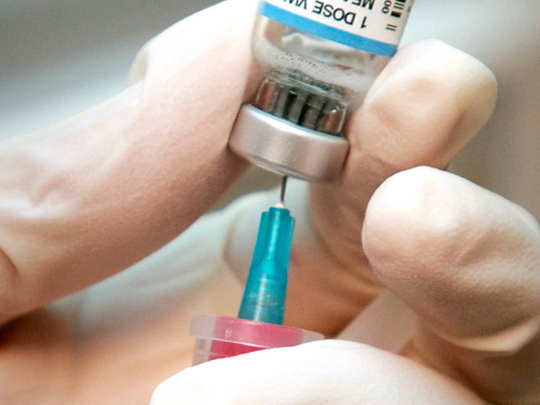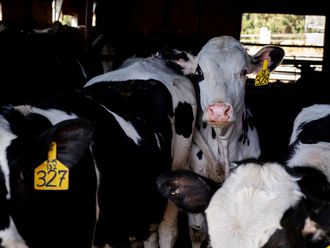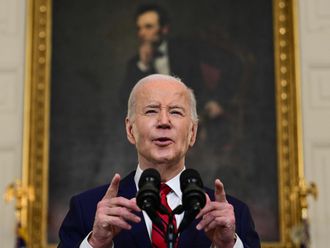
Washington: Largely because of resistance to vaccination, cases of measles have reached a 20-year high in the United States, federal health officials said Thursday.
As of May 23, there were 288 confirmed cases in the United States — more than in all of 2013, and more than in the equivalent period of any year since 1994. The number is expected to increase during the summer travel season.
“This is not the kind of record we want to break,” said Dr Anne Schuchat, director of immunisation and respiratory diseases for the US Centres for Disease Control and Prevention.
The measles virus, which is highly contagious, usually causes only a fever and a rash. But it can lead to pneumonia, brain damage, deafness and even death. An unvaccinated American child who develops measles has about a 1 in 500 chance of dying, even with hospital care, according to the CDC.
There were fewer than 200 cases last year; the record low was 37 cases in 2004.
Eighty-five per cent of this year’s cases were in people not vaccinated because of religious, philosophical or personal objections, Schuchat said. In an unusual twist, over half were ages 20 or older. They may have included adults whose parents refused to vaccinate them years ago, she said.
Forty-three of the 288 who contracted the virus were hospitalised, most with pneumonia. None died.
Almost half the cases were part of a continuing outbreak in Amish communities in Ohio that started with missionaries returning from the Philippines, which is experiencing an outbreak that has caused 41 deaths.
There were 60 cases in California, mostly in the San Francisco Bay Area and in Orange County, where large numbers of wealthy parents refuse to vaccinate their children.
The third-biggest outbreak was in New York City, which registered 26 cases in February and March. It was concentrated in Upper Manhattan, and cases are believed to have spread in hospital waiting rooms because doctors and nurses did not promptly recognise the symptoms. At least two children that contracted the virus were from families that refused vaccines; seven were too young to be vaccinated.
Of the cases whose origins could be traced, 22 were imported from the Philippines, six from India, two from China, and the rest from 15 other countries.
Measles can be caught virtually anywhere. France, the world’s most popular tourist destination, had an outbreak of 20,000 cases from 2008 to 2011.
Before measles vaccination became routine in the early 1960s, about 500,000 Americans got the virus each year, most of them young children. Of those, about 48,000 were hospitalised, about 500 died, and many more suffered brain damage and deafness.












